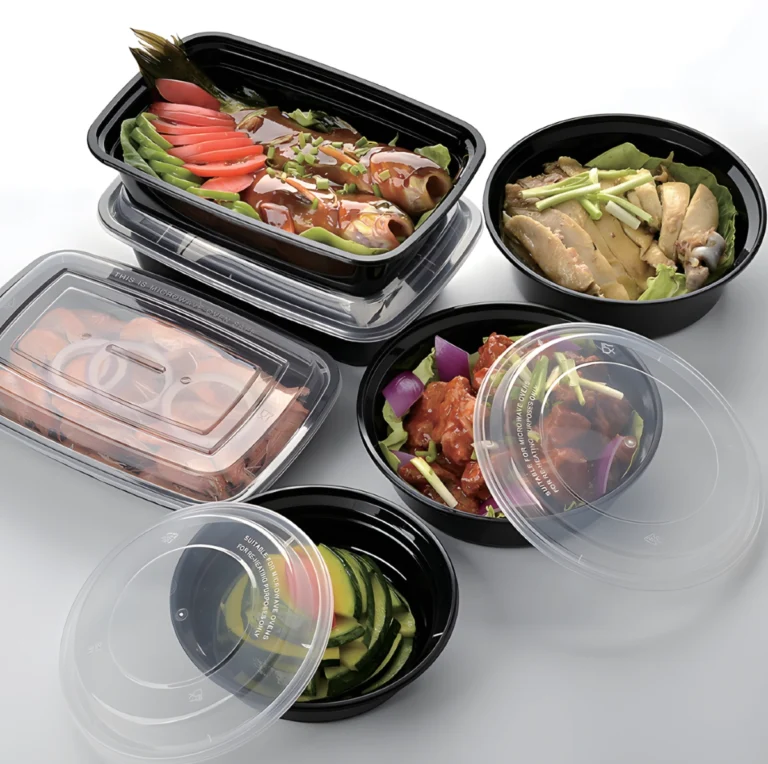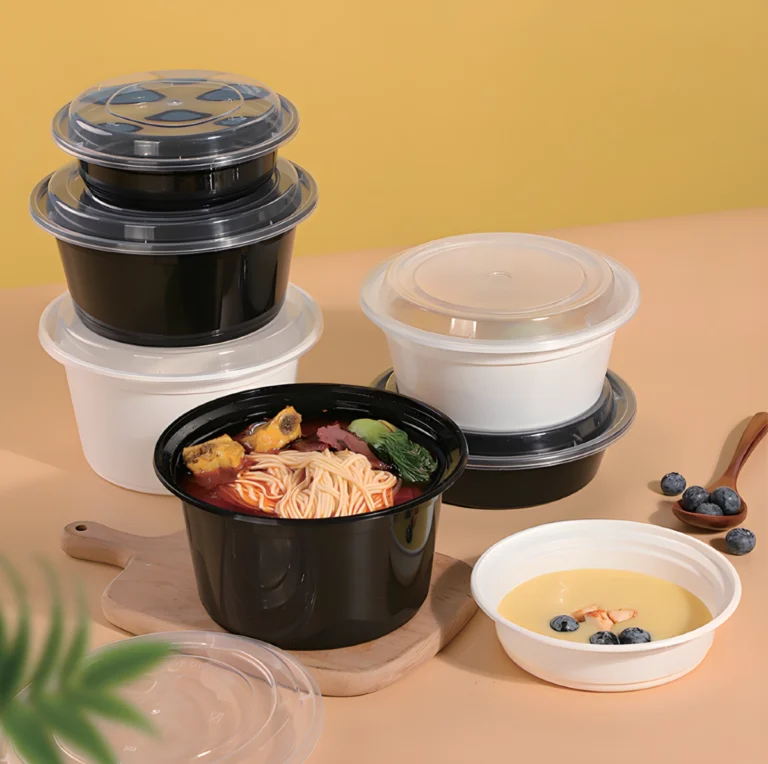Know Before Choosing PET or PP Plastic Cups for Your Beverage Business
In today’s highly competitive beverage industry, choosing suitable packaging is a crucial factor that should not be overlooked—especially when deciding between PET and PP plastic cups, both popular options. This article will introduce you to the key properties, pros and cons, and consideration factors of each plastic cup type so you can confidently choose packaging that fits your business needs.
PET Plastic Cups: Outstanding Choice for Beauty and Quality
PET (Polyethylene Terephthalate) cups are among the most popular options for beverage businesses due to several outstanding features that meet the needs of both operators and consumers:
- Clarity and Appearance: PET’s transparency enhances visual appeal, letting customers clearly see drink colors and ingredients—key for drinks like smoothies or bubble tea that showcase vibrant ingredients.
- Lightweight: PET cups make transportation and storage more affordable and convenient, helping businesses save costs and offering customers easy portability, especially for takeaways.
- Impact Resistance: PET cups are durable and resistant to breakage during handling or shipping, bringing safety for beverage packaging.
Limitations: PET cups are not highly heat-resistant, making them unsuitable for very hot drinks. They also tend to be more expensive than other plastic cup varieties.
Benefits of PP Cups for Beverages: The Cost-Effective, Versatile Choice
PP (Polypropylene) cups are another popular choice for beverage businesses because of their versatility and accessible pricing:
- High Heat Resistance: PP cups withstand much higher temperatures than PET, allowing them to hold hot beverages without losing shape—ideal for coffee, tea, or other hot drinks.
- Cost: PP cups are usually cheaper than PET, making them attractive for cost-conscious businesses, especially small or newly established operations.
- Reusability: PP cups can be reused multiple times, reducing plastic waste and being more environmentally friendly than single-use cups.
Limitation: PP cups are less clear than PET, so they may be less suitable for drinks where visual presentation is important.
PET vs. PP: How Do They Compare?
| Property | PET | PP |
|---|---|---|
| Heat Resistance | Up to 60°C, not suitable for hot drinks | Up to 100°C, suitable for hot drinks |
| Transparency | Highly clear, visually appealing | Less clear |
| Reusability | Usually single-use | Can be reused many times |
| Durability | Good impact resistance | Good heat resistance |
| Cost | Generally higher | Generally lower |
| Environmental Impact | Easily recyclable, long decomposition time | Harder to recycle, but reusable |
Each type’s distinct strengths and weaknesses mean businesses must choose according to their specific needs.
What to Consider When Choosing Plastic Cups for Your Business
Several factors should guide your choice of plastic cups for beverage businesses to ensure a good fit for quality, cost, and brand image:
- Type of Beverage: Hot drinks require heat-resistant PP cups, while PET cups suit cold drinks meant to be visually displayed.
- Target Customers: If your audience values aesthetics, PET is better. For versatility and cost-effectiveness, choose PP.
- Budget: Especially important for small businesses or startups—choose cups that match your budget to control costs.
Environmental Impact: Caring for the Planet Alongside Your Business
With increasing consumer environmental awareness, eco-friendliness matters:
- PET cups: Easy to recycle, high recycling rates in many countries, but can persist for hundreds of years if not properly managed.
- PP cups: Harder to recycle than PET, but multiple reuse helps reduce overall plastic waste.
Businesses can also consider greener alternatives, like biodegradable material cups or encourage customers to bring their own containers to reduce single-use plastics.
Trends in Plastic Cup Usage for Beverages: Innovations for the Modern Consumer
The beverage industry continuously evolves, and so do plastic cup trends:
- Bioplastic Innovations: Development of naturally biodegradable plastics and use of nanotechnology to add features like antibacterial properties.
- User-centric Design: Trends include cups with spill-proof lids or specialized straw slots, improving convenience.
- Safety Standards: Stricter regulations mean manufacturers are developing safer cups that use fewer harmful chemicals and don’t leach toxins when heated.
Beverage businesses aiming to thrive in a competitive market must stay updated on these trends to select cups based on quality, safety, and environmental friendliness.
Tips for Plastic Cup Maintenance: Maximum Use and Safety
Proper care not only extends cup life but also maintains beverage quality and consumer safety:
- Cleaning: Wash with warm soapy water and rinse well. Avoid excessively hot water or hard scrubbing that could damage cups. Clean reusable PP cups immediately after use to prevent stubborn stains.
- Storage: Keep cups dry and clean; avoid over-stacking to prevent deformation. PET cups should be stored away from direct sunlight to prevent deterioration.
- Usage Cautions: Do not use PET cups for hot drinks or put PP cups in the microwave without verifying microwave safety. Follow manufacturer instructions for longer, safer use.
Proper care helps businesses save costs long-term and maintain product quality effectively.
Frequently Asked Questions
What’s the difference between PET and PP cups?
PET offers better clarity and aesthetics—ideal for cold drinks. PP withstands heat better and is reusable.
Which type is more environmentally friendly?
PET is easier to recycle; PP can be reused multiple times. Both have different eco-friendly advantages.
Which cups are best for coffee businesses?
PP is usually preferable for heat durability, PET for visually appealing cold drinks.
Can PET cups be used for hot drinks?
Not recommended, as they may deform or release harmful chemicals when exposed to heat.
How can you extend plastic cup usability?
Proper cleaning, suitable storage, and following manufacturer guidelines help extend a cup’s lifespan.
Are there alternatives to PET and PP cups for drinks?
Yes, options include coated paper, glass, or naturally biodegradable cups, each with its own pros and cons.
Summary
Choosing the right plastic cup for a beverage business is a vital decision impacting product quality, customer satisfaction, and brand image. PET cups stand out for clarity and aesthetics, while PP cups excel in heat resistance and reusability—each with distinct advantages and limitations.
By thoroughly considering beverage type, target consumers, cost, and environmental impacts, businesses can make informed packaging choices. Keeping up with industry trends and maintaining cups properly ensures long-lasting and cost-effective benefits for your business.





